|
|
Post by dave1800 on Apr 26, 2014 21:36:35 GMT
Good luck Sunday! Do you have a spare coil with you? David And she ran very well down to Longbridge and back before starting to run rough again coming back from college. The following day, she wouldn't start at all....... = Hurrah for ancient Champion plugs. Off to Gaydon in her tomorrow for the Wolseley Owners Club AGM. Chris. |
|
|
|
Post by tommydp on Apr 27, 2014 12:11:12 GMT
Well done, Chris! Have a nice trip!
Strange about the plugs.. I run Bosch W 7 DC at present.
Regards, Tommy
|
|
|
|
Post by indianajones on Apr 27, 2014 20:08:28 GMT
Good luck! the joys of classic car ownership aye?
-Andrew
|
|
|
|
Post by charlypm on Apr 28, 2014 3:51:17 GMT
Just for the record, I run Champions in my TR6 racecar and they work wonderfully. I've tried other plugs and not had the success I have with the Champions. Attachments:
|
|
|
|
Post by dave1800 on Apr 28, 2014 7:28:28 GMT
I always favoured Champion in my Landcrabs but preferred NGK or Bosch for my Saabs. Chris, it may be worth you trying to hook up your ignition system to a diagnostic scope at the College (if they have it available) and taking some prints / photos of the primary and secondary waveforms at idle and when opening the throttle. You can then discount or otherwise the coil, plug leads, distributor cap, rotor arm, ignition wiring.
It would seem that there is either insufficient HT energy if it won't start at all on one set of plugs that were working the day before, or that as your problems appear to occur after a long run that there is something wrong with the mixture or ignition timing that is damaging the plugs. From your posts about how well the car is running, I would hazard a guess that your ignition HT is marginal.
Maybe worth checking basics such as voltage across the coil (and also the ballast resistor)to see if this agrees with anticipated from Ohms law calculations and also the ignition current with the engine off and c/b closed.
It could of course just be jealousy as you spend so much time with the Austin!
Regards
David
|
|
|
|
Post by Penguin45 on Apr 28, 2014 23:31:12 GMT
Interesting thoughts, David. I asked the question today about test equipment. The college has state of the art diagnostic equipment for modern cars, but that won't analyse the basic Ketteringham system.
I need to get my hands on a test meter with a moving coil. As above, I've moved on with my own test equipment for work, which is all digital. The coil is getting slightly over 12vDC when cranking (Ballast system with switching relay, so all good), running is showing as 3.4vDC. I am certain that this is the digital meter being unable to keep up with the switching, as the ballast resistor is showing the correct reading when split from the circuit (1.6 Ω). I suspect that were I to double that voltage reading, that would be the correct voltage (6.8vDC), but I'd like to prove that.
I shall find some nice new Champion N6Ys and fit them and see where we're going.
Chris.
|
|
|
|
Post by dave1800 on Apr 29, 2014 1:39:44 GMT
Champion N6Ys ? I thought N9Y was the standard recommended plug? I would think that a colder plug such as the N6Y may foul easier in a Landcrab engine but perhaps not with unleaded fuel? EDIT I have now found this reference on Unleaded fuel. Not sure how far this is relevant for standard engines? "Gasoline quality: With musclecar-era leaded gas, the lead is attracted to the hotter (core-nose) part of the plug, causing glazing. The spark runs down the core nose instead of jumping the gap. Going to a slightly colder plug helps prevent lead-glazing. However, with todays cleaner-burning oxygenated unleaded gas, an equivalent engine needs to run plugs about 1-2 heat ranges hotter than originally specified (many plug manufacturers have revised their catalogs accordingly)". Read more: www.carcraft.com/techarticles/spark_plugs_tips/#ixzz30G4xnOKQEven though most of what I do is all digital electronics, I always keep a moving coil meter handy whenever I want to watch a relatively slow moving voltage or current. To take an average voltage using a digital meter is simply taking several snapshots and is hit and miss as to when it takes them in relation to the shape of the pulse. Of course I am careful not to load sensitive electronics with a relatively low impedance analogue meter. In fact I still use a very robust Russian made multimeter that I bought more than 40 years ago! Maplin stock a couple analogue meter 1 meter 2I was a bit surprised about the college comment about the diagnostic equipment not being suitable for the Kettering system. The secondary waveforms of the ignition coils are virtually the same whether they are switched by a contact breaker or transistor (IGBT) and will show burn time, voltage peaks, variations across cylinders, waveform shapes etc. There will be some slight differences in the primary analysis due to possible contact bounce but the fundamental waveforms will be the same, just lower current and fixed dwell on the Kettering system. Good luck David Interesting thoughts, David. I asked the question today about test equipment. The college has state of the art diagnostic equipment for modern cars, but that won't analyse the basic Ketteringham system. I need to get my hands on a test meter with a moving coil. As above, I've moved on with my own test equipment for work, which is all digital. The coil is getting slightly over 12vDC when cranking (Ballast system with switching relay, so all good), running is showing as 3.4vDC. I am certain that this is the digital meter being unable to keep up with the switching, as the ballast resistor is showing the correct reading when split from the circuit (1.6 Ω). I suspect that were I to double that voltage reading, that would be the correct voltage (6.8vDC), but I'd like to prove that. I shall find some nice new Champion N6Ys and fit them and see where we're going. Chris. |
|
|
|
Post by Penguin45 on Apr 29, 2014 17:14:14 GMT
9s, of course David, my bad.
Chris.
|
|
|
|
Post by indianajones on Apr 29, 2014 20:20:06 GMT
"My bad", you can tell you have teenage children hah!
-Andrew
|
|
|
|
Post by dave1800 on Apr 30, 2014 1:28:21 GMT
I thought so, but an interesting discussion as to whether a colder plug is now more suited to using lead free fuel in the B series engine as it burns hotter? David 9s, of course David, my bad. Chris. |
|
|
|
Post by dave1800 on Apr 30, 2014 1:32:11 GMT
Teenage children! Something for you to look forward to - and you thought your sleepless nights were nearly over.  David "My bad", you can tell you have teenage children hah! -Andrew |
|
|
|
Post by Penguin45 on May 28, 2014 14:09:16 GMT
MoT test on Friday.
Last week at college saw t'other ChrisC and myself changing the o/s top ball joint. Whilst she was up on the hoist we found play in the n/s top one as well. Took it off and seemed in reasonable nick, so ran it back on and it locked. Started adding the shims we took off back on again. When it was back to the starting settings, it was absolutely fine! I can only assume that somewhere in the distant past I've changed this, shimmed it up properly and then not got it fully home. Strange.
Today, I've repaired a connection at the horns, cleared out the jets for the screen wash, changed a sidelight bulb and ermmm, that's it.
Chris.
|
|
|
|
Post by Penguin45 on May 28, 2014 14:11:09 GMT
Oh yes - syphoned out the boot. Looks like the rear screen seal needs a doing over with Captain Tolleys Creeping Crack Cure.
Chris.
|
|
|
|
Post by dave1800 on May 29, 2014 1:14:08 GMT
Good luck with the MOT! There's quite a lot of chat about shimming ball joints on the mini forums, eg mini ball jointsTwo things to note, the possible need to lap in the balls and the important note about not over-tightening which can lead to catastrophic failure. I have had an upper joint start to turn, overcoming the lock tab so always resorted to a touch of Loctite after that. David MoT test on Friday. Last week at college saw t'other ChrisC and myself changing the o/s top ball joint. Whilst she was up on the hoist we found play in the n/s top one as well. Took it off and seemed in reasonable nick, so ran it back on and it locked. Started adding the shims we took off back on again. When it was back to the starting settings, it was absolutely fine! I can only assume that somewhere in the distant past I've changed this, shimmed it up properly and then not got it fully home. Strange. Today, I've repaired a connection at the horns, cleared out the jets for the screen wash, changed a sidelight bulb and ermmm, that's it. Chris. |
|
|
|
Post by Penguin45 on May 31, 2014 19:27:14 GMT
Well, it didn't go well.....  Roy the Tester wasn't about, so David the Boss did it. Anyway, she's failed on leaking fuel tank (it isn't) and corrosion in the front cross member (it is). 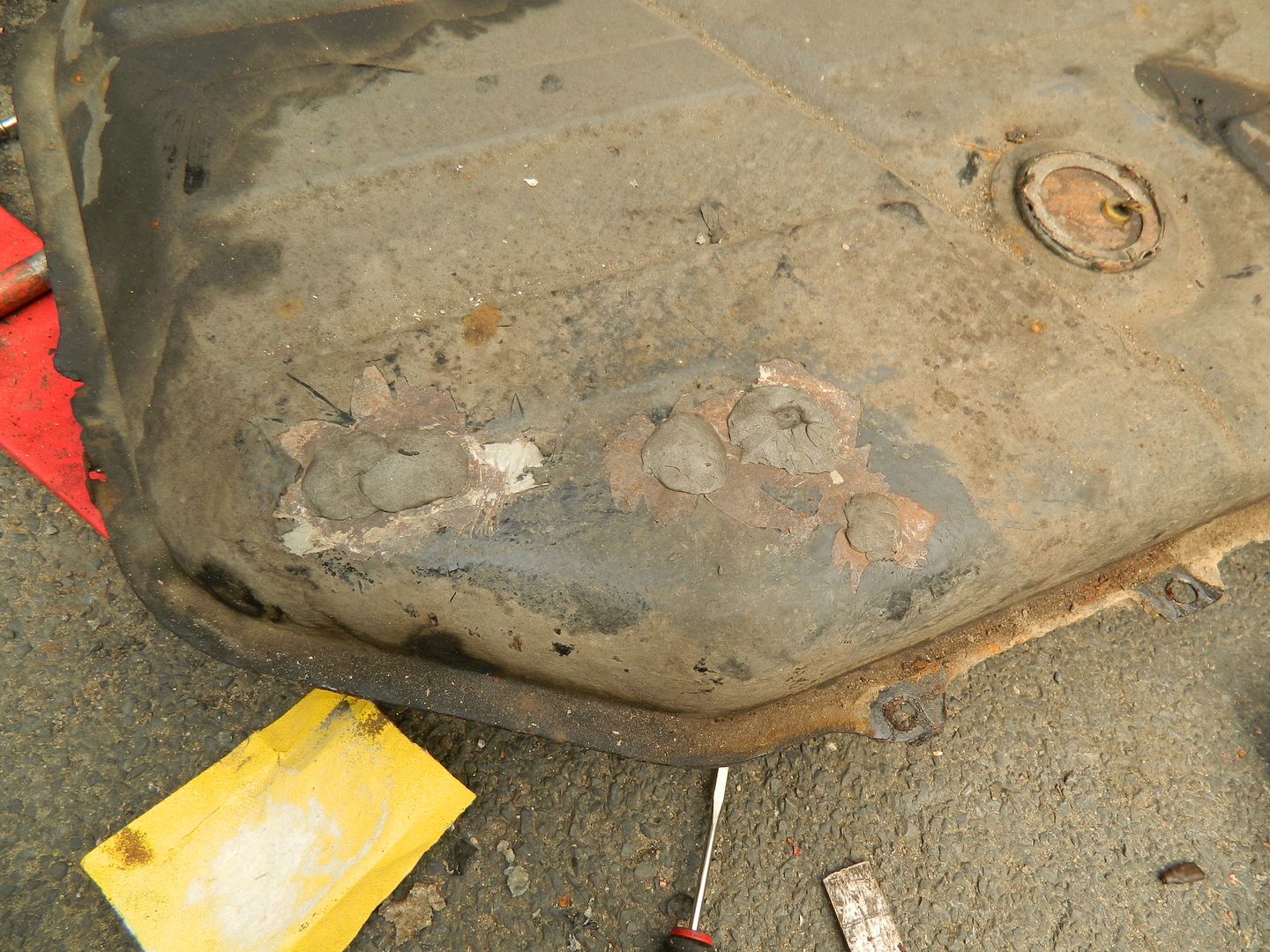 Tank out, re-did the Granvilles Petro Putty repairs to the pinholes on the top and photographed it, just to prove the point. It really doesn't leak. 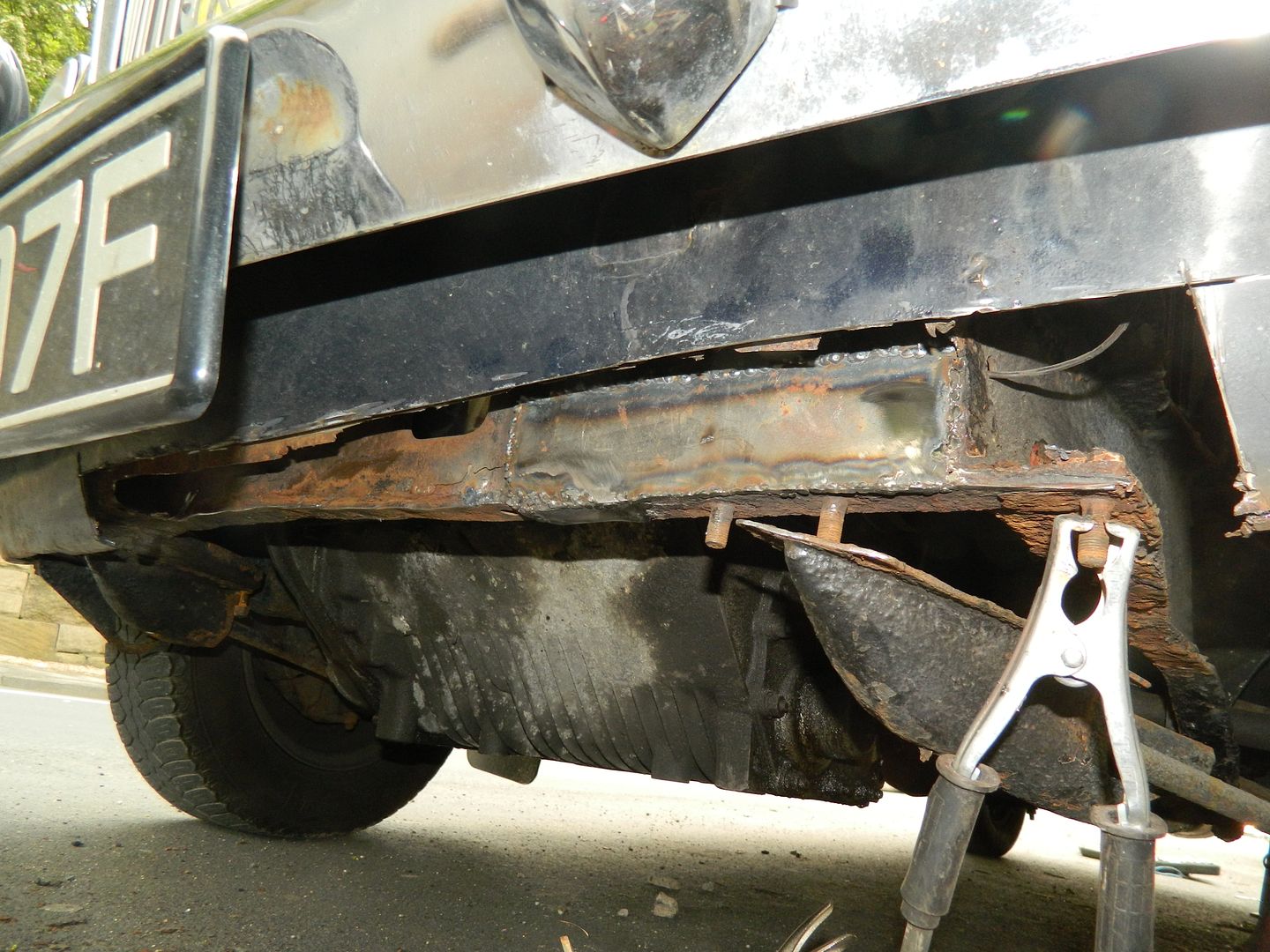 Large section of valance cut away, inner panel repaired. 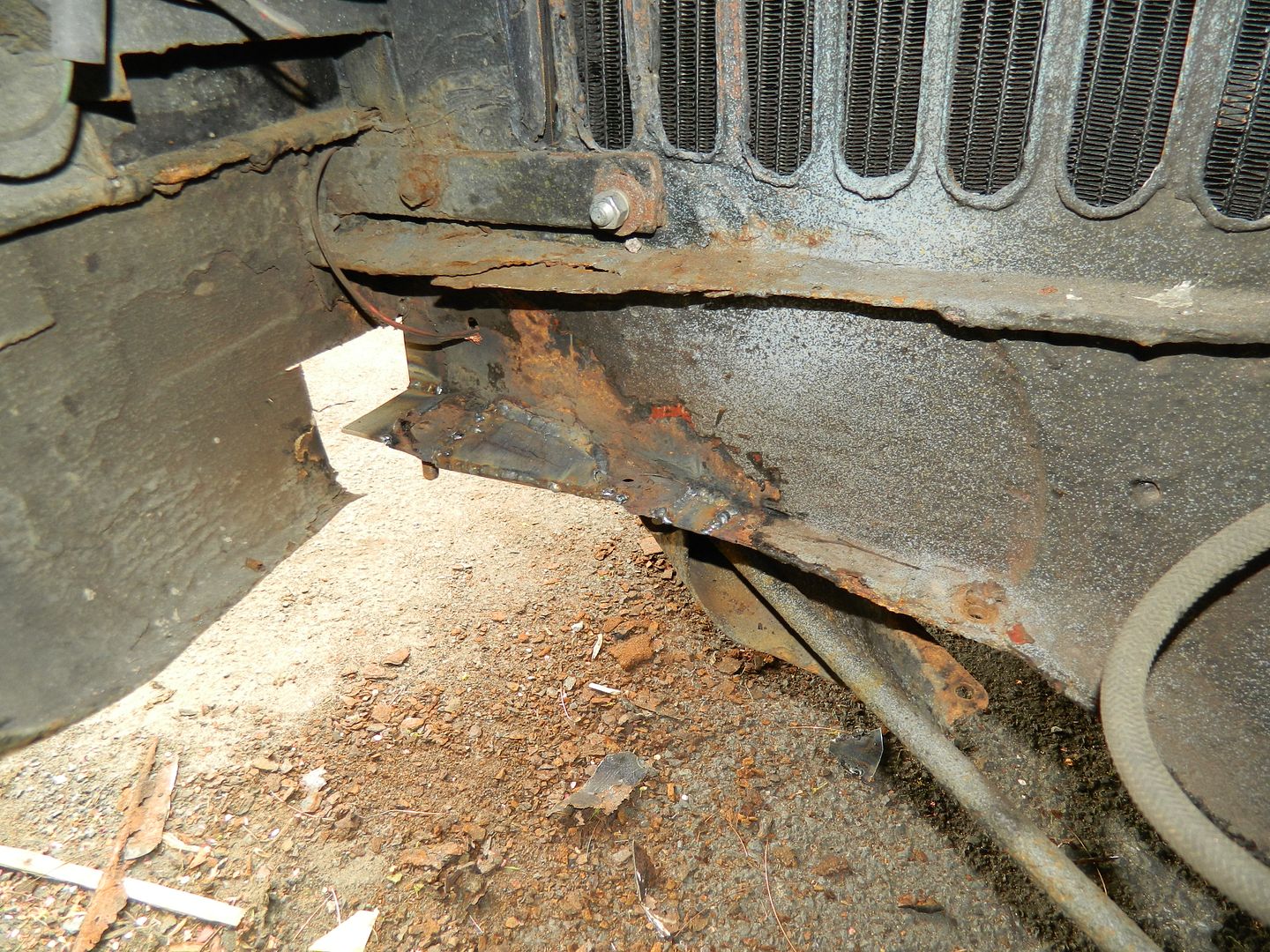 Bit of work on the chassis rail. 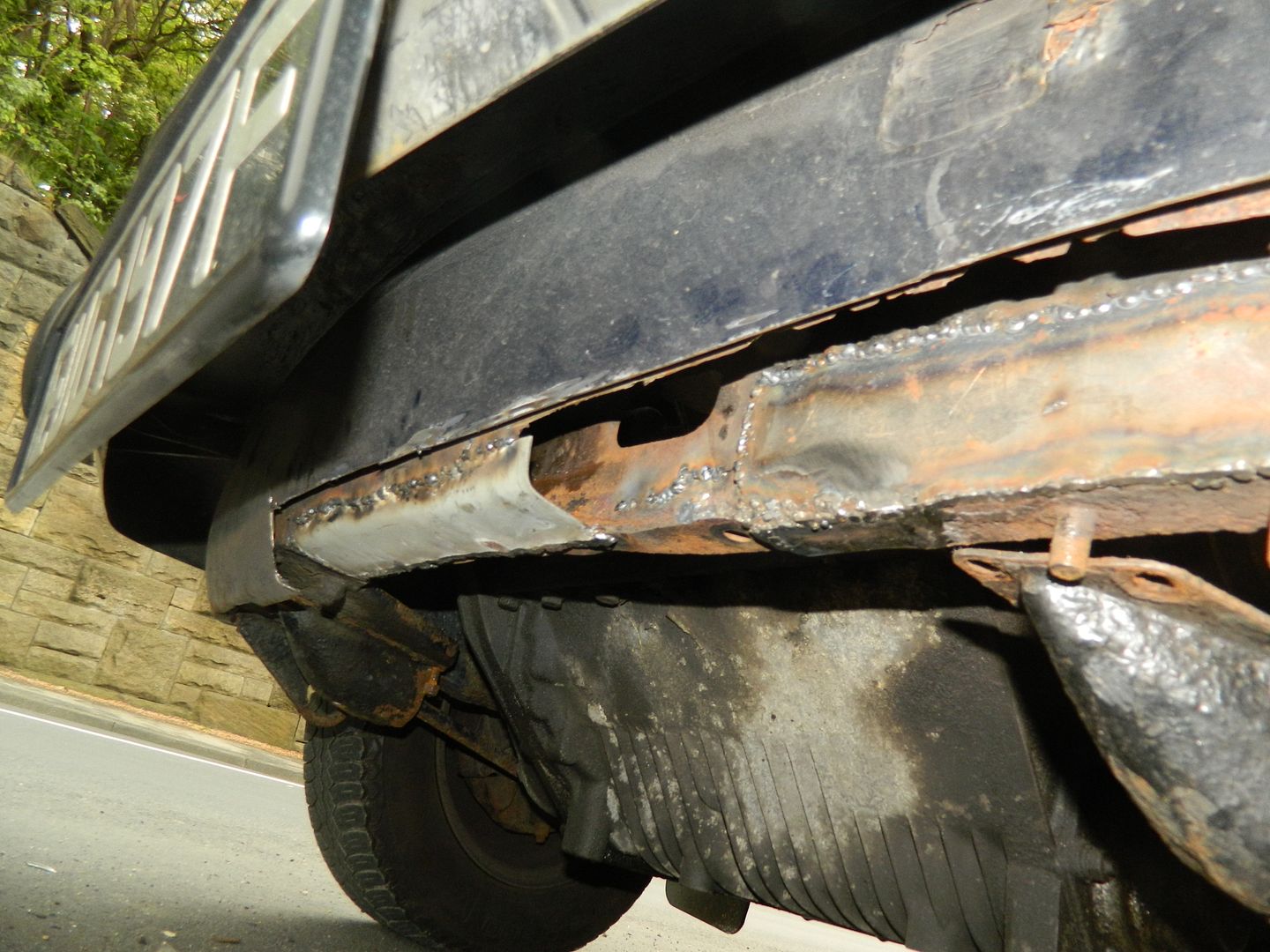 First section of the bottom of the box going in. 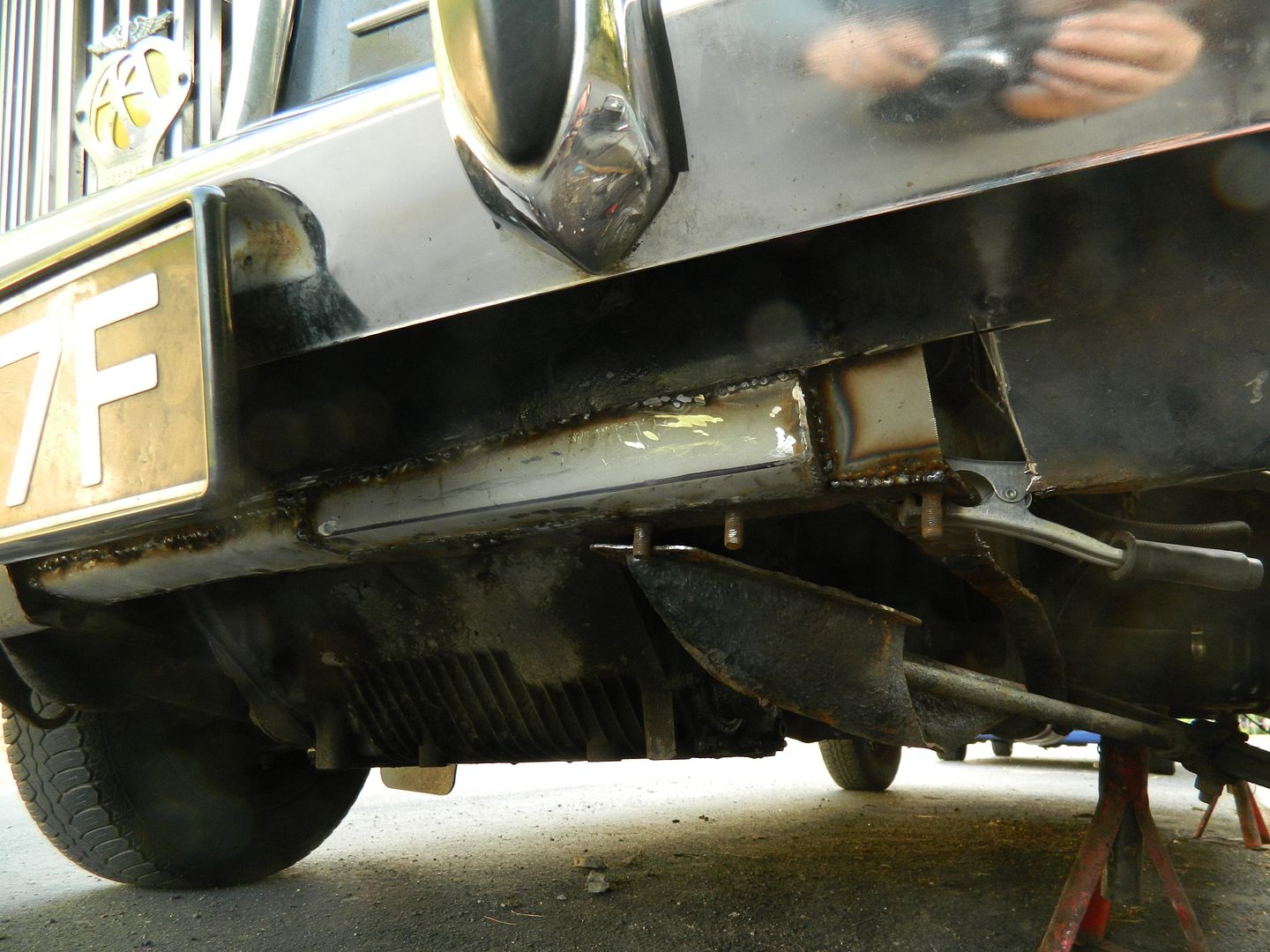 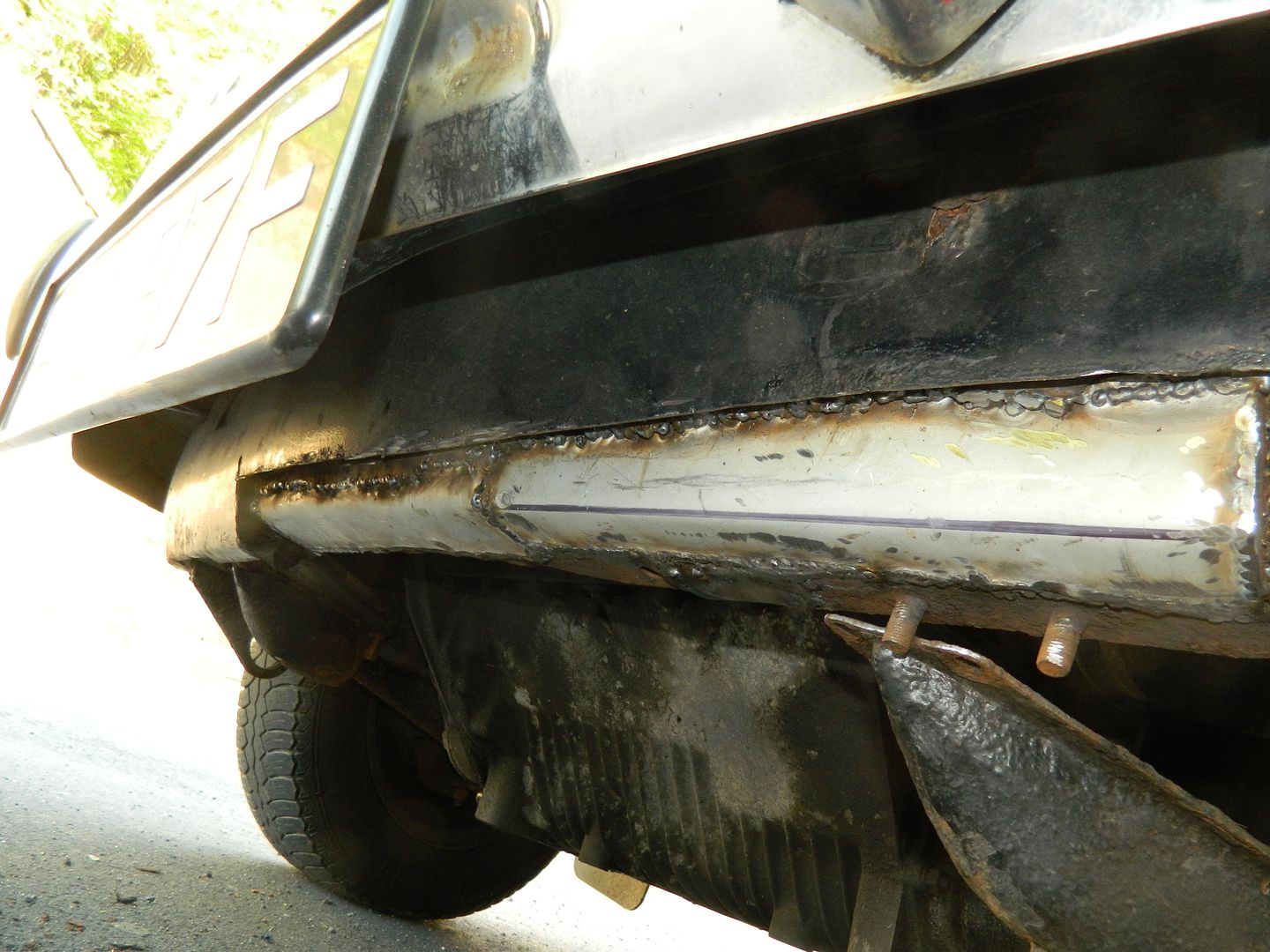 Second part and a little closing piece in. 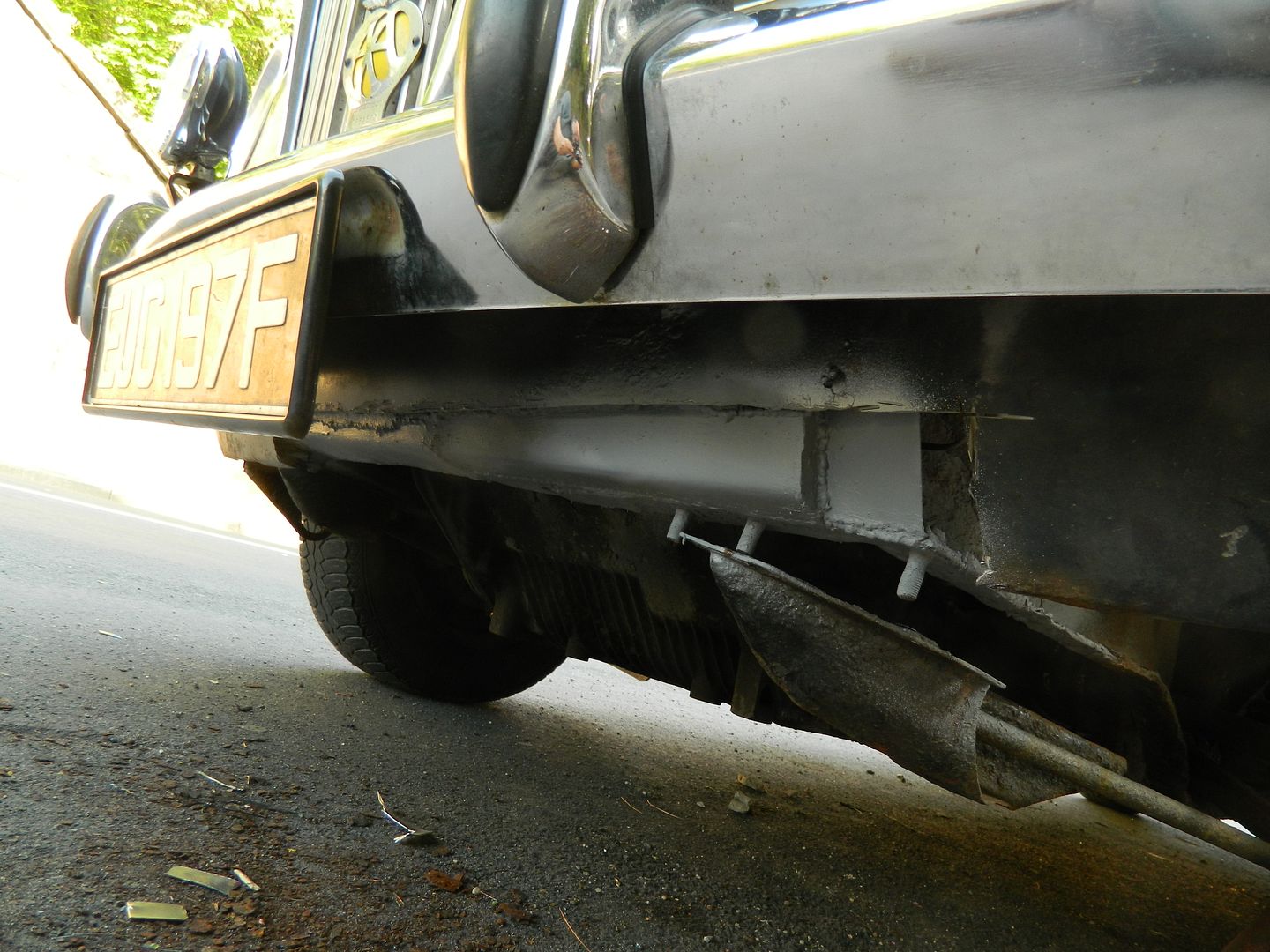 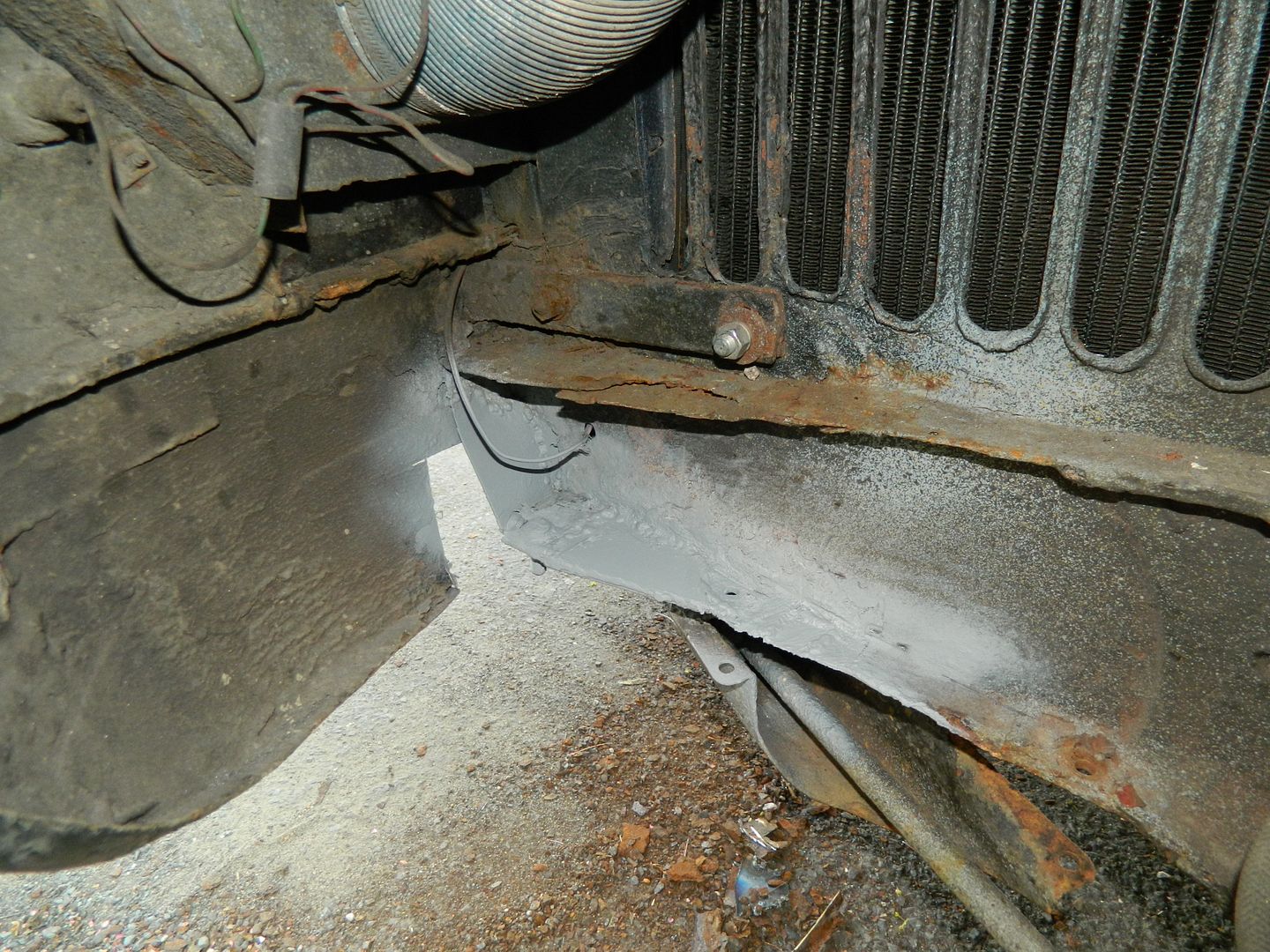 Visible bits tidied up, then etch primer, seam sealer, primer. Will finish it off with the Very Tough Paint, then re-assembly and weld the valance back together. Oh, refit the tank. Won't get to the Tatton show tomorrow, sadly. Chris. |
|














